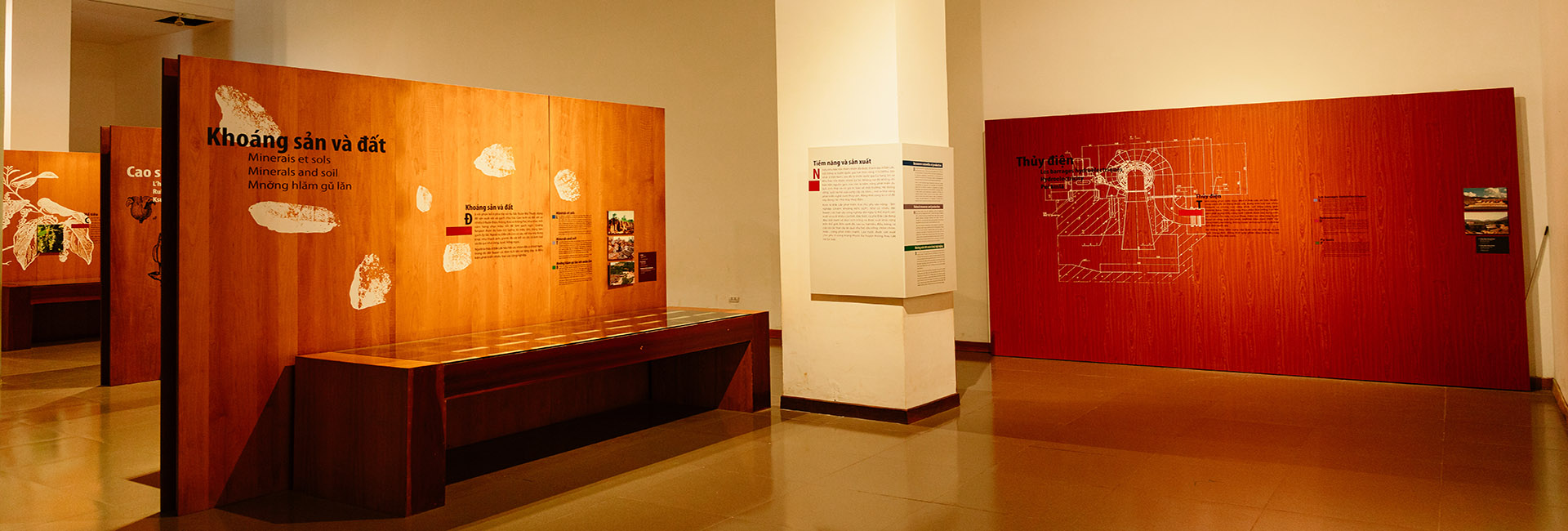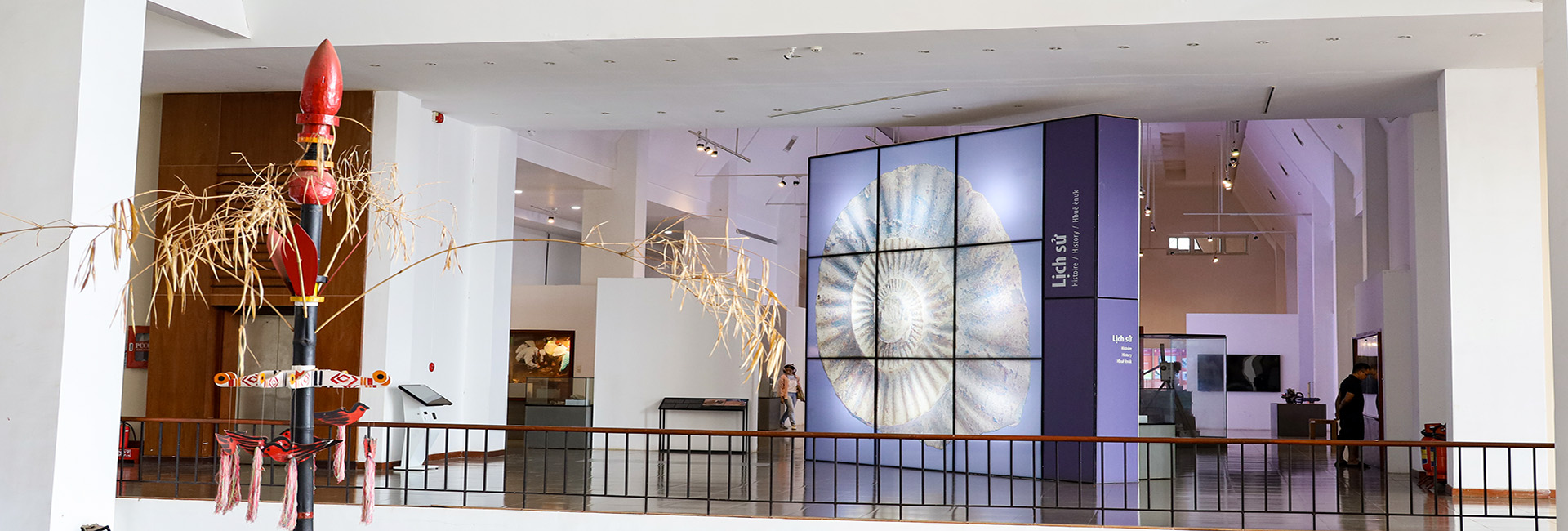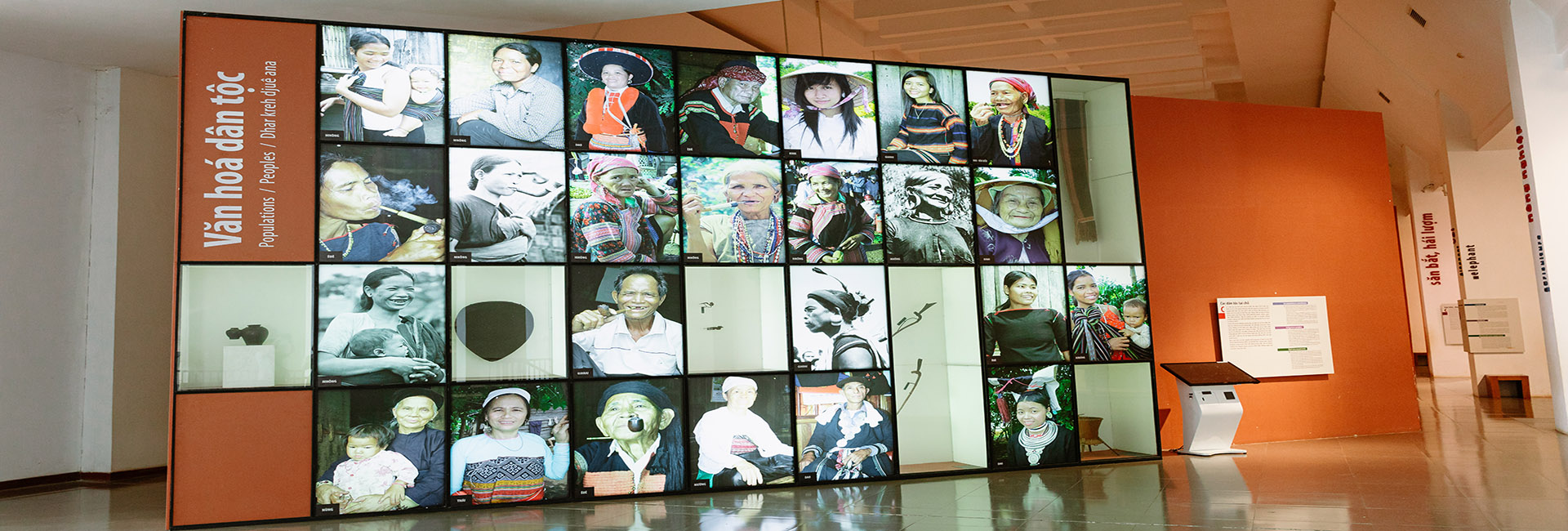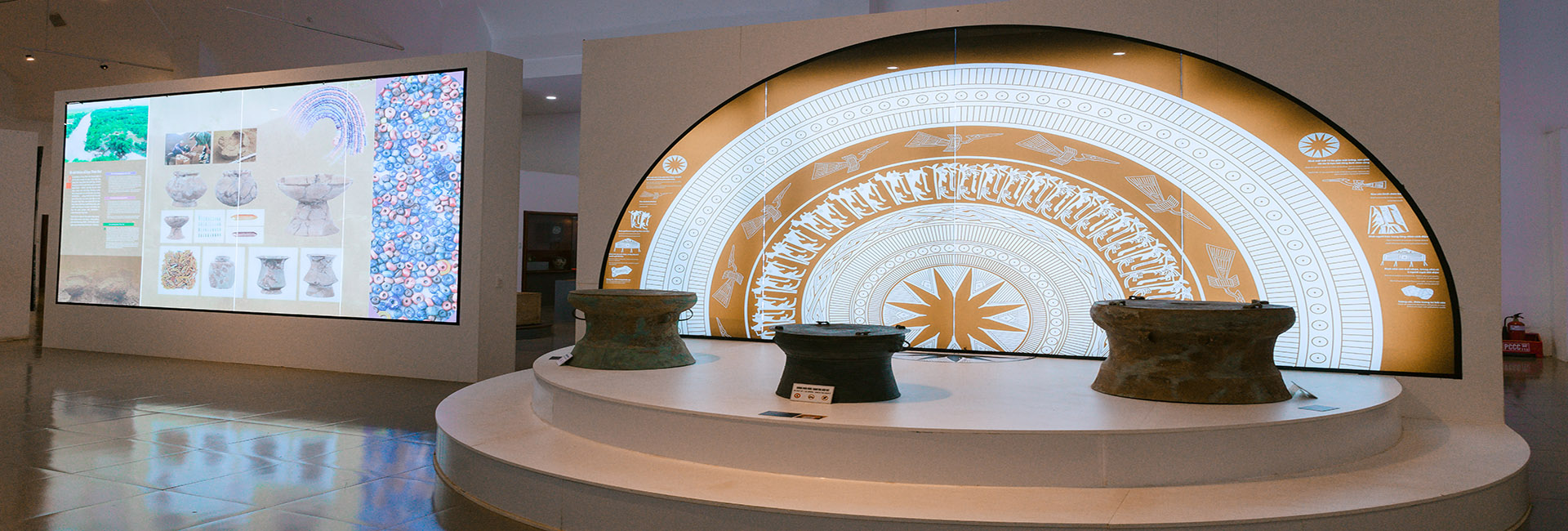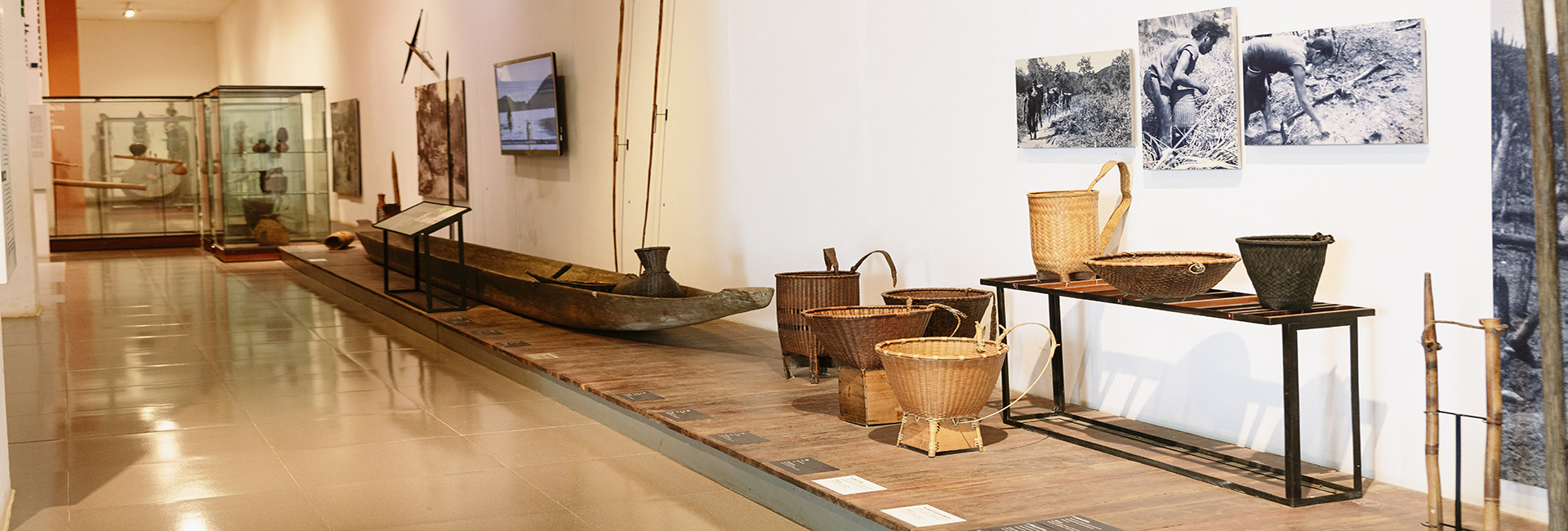RENAME “NO.4 NGUYEN DU HISTORICAL RELIC” INTO “HISTORICAL RELIC OF BAO DAI PALACE”
On February 28th, 2023, the Ministry of Culture, Sports, and Tourism issued Decision No.425/QD-BVHTTDL on modifying the names of relics in Article 1 of Decision No. 02/1999-QD-BVHTT dated on January 26th, 1999 of the Ministry of Culture and Information (the Ministry of Culture, Sports, and Tourism at present) , which is about ranking national monuments.
According to this Decision, No.4 Nguyen Du Historical Relic (Tan Tien ward, Buon Ma Thuot city, Dak Lak province) was modified into Historical Relic of Bao Dai Palace (Tan Tien ward, Buon Ma Thuot city, Dak Lak province).
This has created the conditions for promoting value and capacity of the relic, and ithas met the public’s needs for visiting, studying and getting experienced of in the provincal relics.
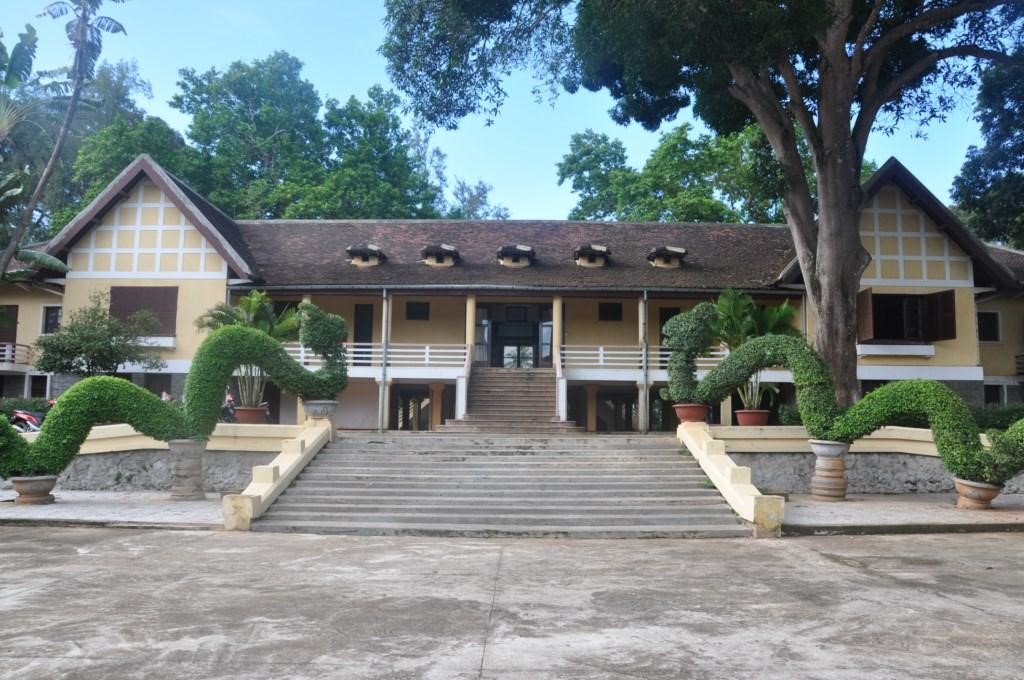
Located in the center of Buon Ma Thuot city, with the area of 6.5 ha, the Relic havingone building was the Bao Dai King’s staying and working place. It was also a mahout’s place (the elephant keepers’ house). The building was built on a flat 2.135.8-meter-square rectangle man-made land, which is higher than the yard interface by 2 meters and firmed. Ancient trees, fruit trees, ornamental trees, etc. around the Relic were planted following a familiarly symmetrical motif like Bao Dai Palaces in other places. The campus of the Relic is really a green lung, which brings fresh air for Buon Ma Thuot city. Especially the Palace’s architecture is a harmonious and special combination between the Central Highlanders’ traditional house architecture and that of the Westerners, creating an attractive beauty.
In 1905, The French Envoy -Bardin, had the Léfevre restaurant built at the location of the Relic today. Until 1914, when Sabatier was the envoy in Dak Lak, he remodeled the Léfevre restaurant into the Sheriff Agent Building and lived here for 12 years (from 1914 to 1926). From here, this area was also known as the Envoy Building.
In 1925, a famous historic event happened when ethnic minority intellectual circles led by the teacher - Y Jut surrounded and attacked the Envoy Building with the purpose of killing Sabatier for his cruel actions; if he couldn’t be annihilated, they would change into expostulating his and his accomplices’ crimes and send the demands to The Central Vietnam ruling officials and higher classes. Although the attack couldn’t annihilate Sabatier, the political fight of students, workers, and officials led by the teacher - Y Jut happening at the center of Dak Lak (Buon Ma Thuot) had a huge impact on the ruling apparatus of the French colonists and resonated with compatriots of the entire country. This attack also forced the French government to make concessions to the peoples in Buon Ma Thuot, Dak Lak, repartriate Sabatier, and dispatch Giran to replace him.
In 1926, after replacing the envoy - Sabatier, the envoy - Giran remodeled and rebuilt the Palace as today. From here, this building was named Envoy Palace, called by local people Sang Ae Proong (House of the great man). After the envoy – Giran were the envoys such as Thabaeut, Destenay, Henri Gerbinis, Salomon, Jerminc and Levo, etc. took their turns to live in this Palace until March 1945.
When Japanese fascists went up to Buon Ma Thuot, the envoy – Levo stately handed over the house as well as all Dak Lak governments to Japanese fascists. Nguyen Sy Tuc was delegated by Japanese fascists to manage the provincial works
After the success of August Revolution 1945, revolutionary government used the Palace as the Headquarters of the Provincial Advisory Council and an evenue to organize meetings, directing the work of protecting and building the revolutionary government. From August to December in 1945, this was a place to convene meetings of teenagers, women, etc. and implement immediate and long-term work.
On October, 1945, responding to The Golden Week lauched by, the Provisional Revolution, the Provincial Party Committees and Government organizeda Trade Exhibition ofLocal Products at the Palace, and the three-day-and night pledging ceremony of Ede, Kinh, Mnong, and Gia Rai for the purpose of eliminating French colonists’ distortion that had bad impact on relationship between people and revolutionaryto create the entire people’s power in resistance.
On December 1st, 1945, an important meeting chaired by comrade Bui San was held here to discuss the first National Assembly Election of the Democratic Republic of Vietnam. The meeting was suddenly interrupted by the French attack on Buon Ma Thuot. The Viet Minh forces fiercely resisted, and many combatants sacrificed themselves for the country. A Japanese international soldier in the Viet Minh forces in Dak Lak bravely sacrificed himself for the cause of national liberation in Vietnam.
In November 1947, after being guaranteed to return to the country as the Head of State by the French Government, Vinh Thuy (Bao Dai) came to stay here and workin this area for nearly 8 months (from November 1947 to around May 1948).
From 1949 to 1954, at the beginning of the annual rainy season, the Head of State Bao Dai came here to rest and hunt, so the building was also called Bao Dai Palace.
At the end of 1950, the Head of State Bao Dai went to Buon Ma Thuot to attend the ceremony of symbolic receiving the Domain of the Crown land (including Dong Nai Thuong, Lam Vien (including Da Lat), Dak Lak, Pleiku, Kontum...). Bao Dai separated the Central Highlands region and established a special administrative system called the Domain of the Crown through Decree No.6 dated on April 15th, 1950 (the political geography of the Nguyen Dynasty to determine the ruling areasthat the Vietnamese did not make up the majority) under the direct leadership of "the Head of State Bao Dai". On this occasion, the Head of State Bao Dai attended a ceremony of the Central Highlanders, which marked the return of the Central Highlands region to Vietnam from the French and received the polocies following regulations of the Domain of the Crown. At the time, the envoy - Dielot handed over the Envoy Building (Bao Dai Palace now) to the Head of State Bao Dai, and Mrs. Bui Mong Diep had it renovated into the Bao Dai Palace.
In 1952, when Bao Dai was in France, Mrs. Mong Diep on behalf of him received the seal and sword at Buon Ma Thuot airport and then they were brought to Bao Dai's Palace under the supervision and guidance of Duc Tu Cung's seal and sword receiving ritual. At Bao DaiPalace, the seal and sword were placed ceremoniously and guarded carefully by soldiers. During his years of living and working in Buon Ma Thuot, Bao Dai had a great influence in the process of transforming Buon Ma Thuot, from Mrs. Mong Diep on behalf of Duc Tu Cung had the Sac Tu Khai Doan pagoda and a palace for Bao Dai at Lake Lak built, the EnvoyPalace renovated into Bao Dai Palace, etc. Especially, Bao Dai presided over the last Sacrifice to Heaven ritual (the ritual of giving thanks to the Heaven and the Earth for blessings on the people) of the Nguyen Dynasty in Buon Ma Thuot.
From 1954 to 1975, the Palace was the residence and workplace of the Saigon government. In 1957, Ngo Dinh Diem also stayed at Bao Dai's Palace while the Central Highlands Economy Exhibition Fair in Buon Ma Thuot to encourage the exploitation of the Central Highlands. In this Fair, Ngo Dinh Diem attended the opening ceremony and was nearly assassinated.
After the victory of Buon Ma Thuot on March 10th, 1975, the Palace became the first office of the Dak Lak Provincial Party Committee for three years, from March 1975 to 1978. It was the center for directing all political, economic and social activities of the province in the early days of liberation. Mr. Le Chi Quyet, former Deputy Secretary of the Provincial Party Committee said “On March 20th, 1975, the Front-line Office (the Provincial Party Committee) moved to the Palace. He was assigned the task of escorting Mr. Bui San to live and work here.
This place was honored to welcome senior cadres of our Party and State such as the late General Secretary Le Duan (April 1978); the late President Truong Chinh (1982); the late Prime Minister Pham Van Dong; the late General Vo Nguyen Giap; the late President Vo Chi Cong… came to work and rest every time he visited Dak Lak.
On January 26th, 1999, the Ministry of Culture and Information (formerly the Ministry of Culture, Sports, and Tourism) issued Decision No.02/1999/QD-BVHTT on ranking the national historical relic "No.4 Nguyen Du Historical Relic" (the Relic is named after the address of the streets in Buon Ma Thuot at that time). At the same time, the Department of Culture, Sports, and Tourism assigned Dak Lak Museum to directly manage and promote values of the relic.
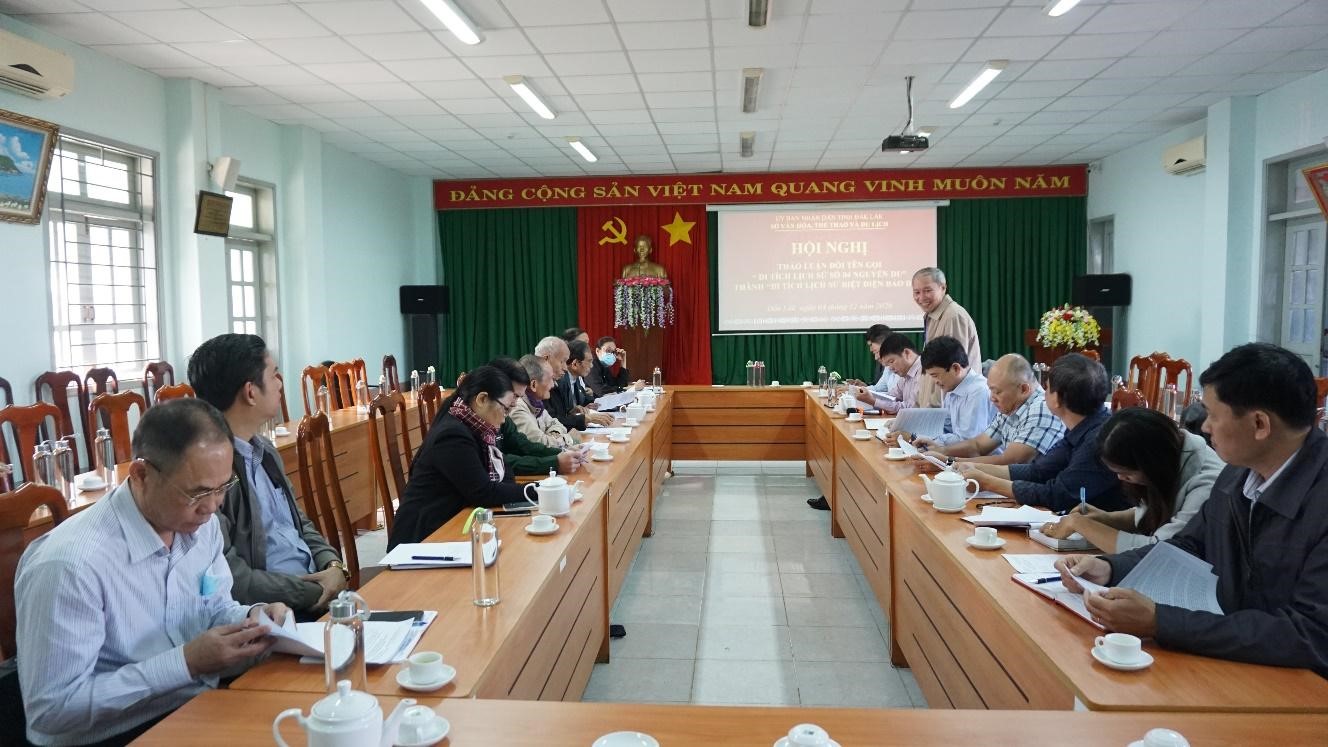
The conference of renaming the relic, December 2020
On February 28th, 2022, Ministry of Culture, Sports, and Tourism issued Decision No.425/QD-BVHTTDL on modifying the name "No.4 Nguyen Du Historical Relic" into "Historical Relic of Bao Dai Palace". The change of name from "No. 4 Nguyen Du Historical Relic" to "Historical Relic of Bao Dai Palace" is based on the content of historical events, characters, and events associated with the relic, and based on its legal foundation and its appropriateness with the provincial socio-economic development goals, creating more favorable conditions for promoting the values and functions of the Relic. At the same time, it meets the demands of the visitors to Bao Dai Palace, for getting experienced and studying.
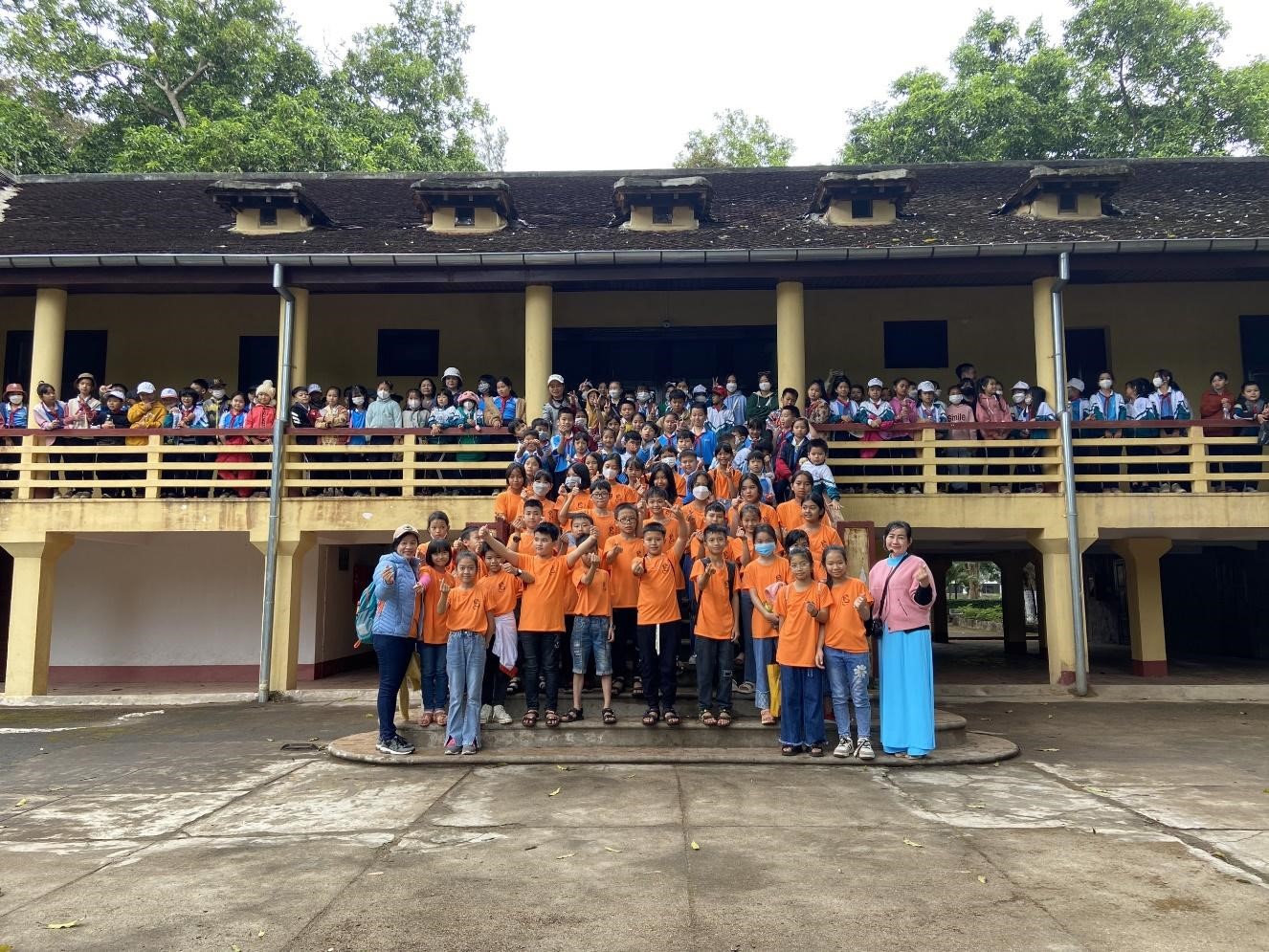
Students visiting the Relic
On the basis of summarizing and evaluating research results, collecting documents related to the Relic, and the number of visitors to the Relic during the past time, Bao Dai Palace is one of the most prominent and interesting tourism destinations in Buon Ma Thuot city in particular and the Central Highlands in general. In the coming time, Dak Lak Museum is going to continue collecting, adding to and redisplaying to introduce to the public the historical events associated with the Relic, including the two resistance wars of the Dak Lak army and people Dak Lak Museum is also organizing exhibitions to recreate the living and working space of the former Emperor Bao Dai, expanding to collect and display historical documents about the Domain of the Crown and the ancient Vietnamese feudal culture (expected to complete the display correction on March 10th, 2023).
With the values of architecture, landscape, and cultural history, "Historical Relic of Bao Dai Palace" promises to be an unforgettable tourist destination of Buon Ma Thuot city, Dak Lak Province. Preserving and promoting the value of the "Historical Relic of Bao Dai Palace" in the coming time is highly feasible, practically meaningful, which contributes to the preservation of local cultural heritage, promotes development of tourism and socio-economy.
GDTT




